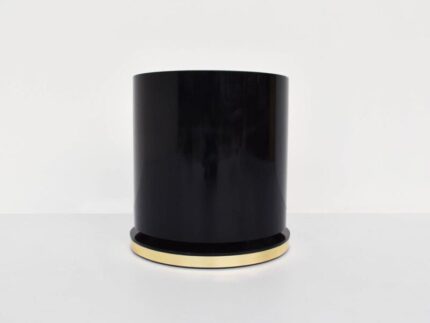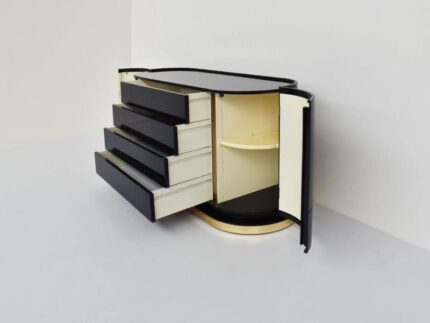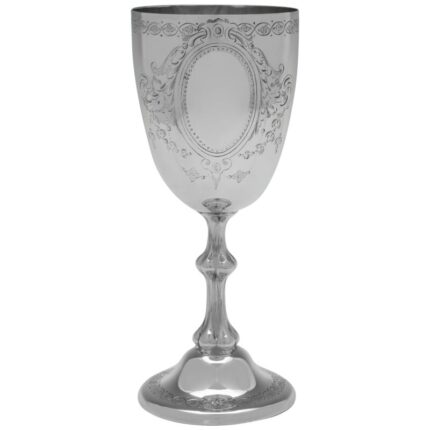It is made of beautiful flame mahogany and satinwood with elegant satinwood inlaid and penwork floral and foliate decoration of ribbons, bellfowers and garlands..
The shaped hinged top opens to reveal a fabulous green baize lined gaming interior for playing cards, above a frieze fitted with a drawer and decorated by a beautiful classical urn. The table is raised on elegant square tapering legs terminating in spade feet.
It is an elegant piece which will enhance a special room in your home.
THE BOTANICAL NAME FOR THE MAHOGANY THIS ITEM IS MADE OF IS SWIETENIA MACROPHYLLA AND THIS TYPE OF MAHOGANY IS NOT SUBJECT TO CITES REGULATION.
Condition:
In excellent condition having been beautifully cleaned and polished in our workshops, please see photos for confirmation.
Dimensions in cm:
Height 74 x Width 89 x Depth 48
Dimensions in inches:
Height 2 foot, 5 inches x Width 2 foot, 11 inches x Depth 1 foot, 7 inches
Marquetry
is decorative artistry where pieces of material (such as wood, pewter or brass silver) of different colours are inserted into surface wood veneer to form intricate patterns such as scrolls or flowers.
The technique of veneered marquetry had its inspiration in 16th century Florence. Marquetry elaborated upon Florentine techniques of inlaying solid marble slabs with designs formed of fitted marbles, jaspers and semi-precious stones. This work, called opere di commessi, has medieval parallels in Central Italian “Cosmati”-work of inlaid marble floors, altars and columns. The technique is known in English as pietra dura, for the “hardstones” used: onyx, jasper, cornelian, lapis lazuli and colored marbles. In Florence, the Chapel of the Medici at San Lorenzo is completely covered in a colored marble facing using this demanding jig-sawn technique.
Techniques of wood marquetry were developed in Antwerp and other Flemish centers of luxury cabinet-making during the early 16th century. The craft was imported full-blown to France after the mid-seventeenth century, to create furniture of unprecedented luxury being made at the royal manufactory of the Gobelins, charged with providing furnishings to decorate Versailles and the other royal residences of Louis XIV. Early masters of French marquetry were the Fleming Pierre Golle and his son-in-law, André-Charles Boulle, who founded a dynasty of royal and Parisian cabinet-makers (ébénistes) and gave his name to a technique of marquetry employing brass with pewter in arabesque or intricately foliate designs.
Edwards & Roberts
The firm Edwards & Roberts was one of the best English antique furniture cabinet makers of the second half of the eighteenth century. The company was founded in 1845 and by 1854 was trading as ‘Edwards & Roberts’, 21 Wardour Street, Antique and Modern Cabinet Makers and Importers of Ancient Furniture’. By 1892 they occupied more than a dozen buildings in Wardour Street, where they continued to trade until the end of the century.
They became one of the leading London cabinet makers and retailers producing high quality furniture and working in a variety of styles, both modern and revivalist. Their business also involved retailing, adapting and restoring the finest antique furniture and there are many examples of their earlier furniture with later embellishments bearing their stamp. The quality of timber used was always the best quality with fine burr walnuts, finely figured mahogany and lighter toned satinwood as they specialised in marquetry, inlay and ormolu.
-
Dimensions:Height: 29.14 in (74 cm)Width: 35.04 in (89 cm)Depth: 18.9 in (48 cm)
-
Style:Victorian(Of the Period)
-
Materials and Techniques:MahoganySatinwoodMarquetry
-
Place of Origin:England
-
Period:1860-1869
-
Date of Manufacture:circa 1860
-
Condition:Good
-
Seller Location:London, GB
-
Reference Number:Seller: A1722Seller: LU950625380932























































Reviews
There are no reviews yet.